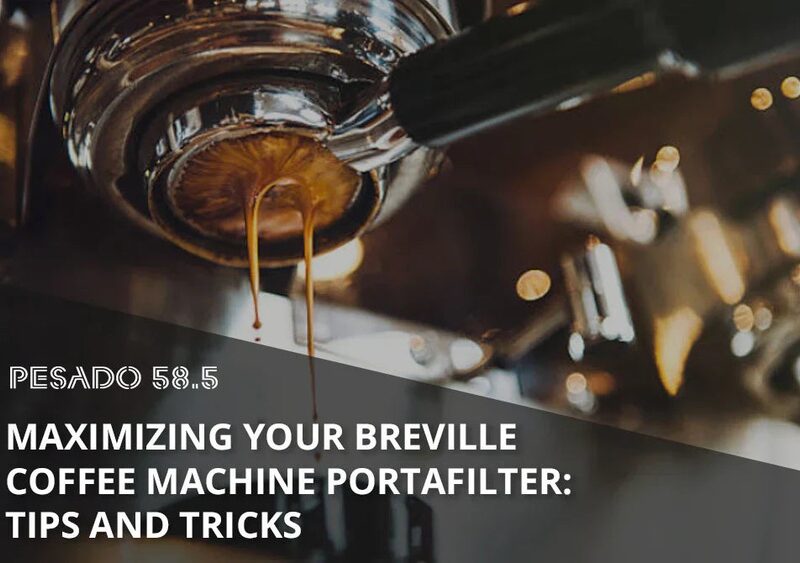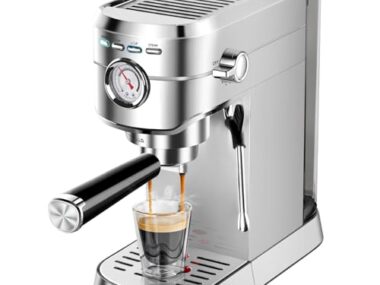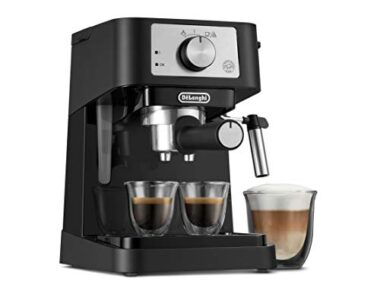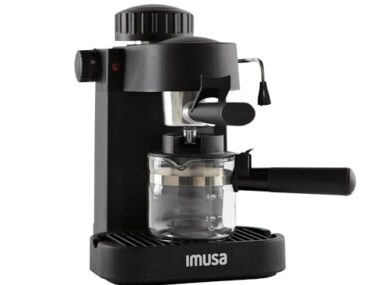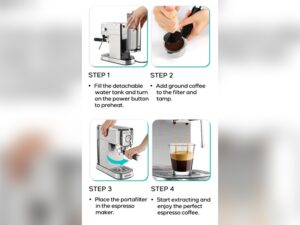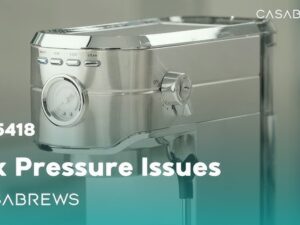If you love great coffee, your Breville coffee machine is your best friend in the kitchen. But are you really getting the most out of it?
Whether you’re new to your Breville or have been using it for a while, there are simple tips and tricks that can transform your coffee experience. From dialing in the perfect grind to mastering the right tamp pressure, these secrets will help you brew espresso just like a pro.
Keep reading, and you’ll discover how to unlock richer flavors, avoid common mistakes, and enjoy every cup to the fullest. Your perfect coffee moment is closer than you think!

Credit: www.youtube.com
Breville Machine Basics
Understanding the basics of your Breville coffee machine is essential for brewing great coffee. This section covers the key features, main parts, and how to set up your machine. Knowing these basics helps you use your machine with confidence and get the best taste from your beans.
Key Features To Know
Breville coffee machines have several useful features. Most models include a built-in grinder, allowing you to grind fresh beans for each cup. A digital temperature control system ensures water stays at the perfect heat for espresso. Many machines offer adjustable grind size and shot volume. The steam wand helps create creamy milk froth for lattes and cappuccinos. These features work together to make coffee brewing easy and precise.
Essential Components
The main parts of a Breville coffee machine include the portafilter, group head, water tank, and drip tray. The portafilter holds the coffee grounds during extraction. The group head is where hot water passes through the coffee to make espresso. The water tank stores fresh water for brewing. The drip tray catches spills and excess liquid. Understanding these components helps you clean and maintain your machine properly.
Setting Up Your Machine
Start by placing your Breville machine on a flat surface near a power outlet. Fill the water tank with fresh, cold water. Insert the portafilter into the group head securely. Turn on the machine and allow it to heat up; this usually takes a few minutes. Adjust the grind size and dose according to your coffee beans. Run a water-only cycle to clean the system before your first brew. Your machine is now ready for use.
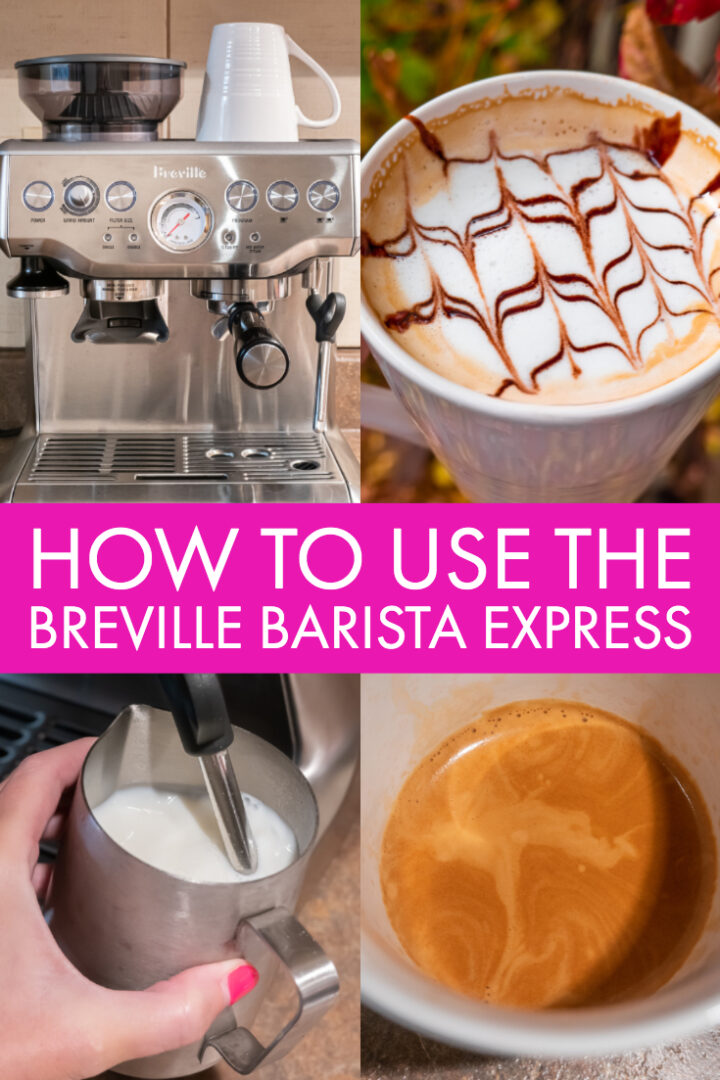
Credit: www.kevinandamanda.com
Bean Selection And Preparation
Choosing and preparing the right coffee beans is essential for a great espresso from your Breville machine. The beans influence the flavor, aroma, and overall quality of your coffee. Small steps in selecting and handling beans make a big difference. This section covers key tips on bean selection and preparation.
Choosing Fresh Beans
Fresh beans deliver the best taste. Look for beans roasted within the last two weeks. Avoid beans with old roast dates or no date at all. Buy from local roasters or trusted brands. Choose beans that suit your flavor preference, such as light, medium, or dark roast. Fresh beans release more oils and aroma, enhancing your coffee experience.
Proper Bean Storage
Store beans in an airtight container to keep freshness. Keep the container in a cool, dark place, away from heat and sunlight. Avoid storing beans in the fridge or freezer, as moisture can damage them. Only grind beans just before brewing. Proper storage preserves the flavor and prevents the beans from going stale quickly.
Grinding Tips For Flavor
Grind size affects the taste and extraction time. Use a burr grinder for consistent grind size. Adjust the grind setting depending on your Breville machine model and bean type. Fine grinds are best for espresso, while coarse grinds suit other methods. Grind beans right before brewing to keep flavors fresh and vibrant. Consistent grinding helps create a balanced and rich espresso shot.
Mastering Grind Size
Grind size plays a key role in brewing great coffee with your Breville machine. It controls how fast water flows through the grounds and how much flavor extracts. Too fine a grind can cause bitter, over-extracted coffee. Too coarse leads to weak, sour brews. Finding the right grind size improves taste and balance. It also helps you enjoy every cup consistently.
Adjusting Burr Settings
Your Breville grinder has burrs that crush beans to a set size. Turn the dial to choose grind coarseness. Lower numbers mean finer grinds; higher numbers mean coarser. Start with a medium setting and test. Small changes can affect flavor a lot. Make adjustments in small steps. Avoid large jumps to prevent ruining your shot.
Dialing In For Taste
Dialing in means finding the grind size that suits your beans and taste. Brew a shot and note its flavor. If the shot tastes bitter or burnt, try a coarser grind. If it tastes weak or watery, go finer. Time the extraction for 25-30 seconds for espresso. Adjust grind size until the taste feels balanced and smooth.
Consistency In Grinding
Consistent grind size leads to steady brewing results. Always use the same burr setting for your chosen taste. Clean the grinder regularly to avoid buildup and clogging. Use fresh beans stored in airtight containers. Measure the dose carefully every time. Consistency helps you enjoy quality coffee every morning without guesswork.
Perfecting The Espresso Shot
Perfecting the espresso shot with your Breville coffee machine takes practice and attention. Every step affects the taste and quality of your espresso. Small changes in tamping, timing, and grind size can create big differences. This guide shares simple tips to improve your espresso skills.
Tamping Techniques
Tamping compresses coffee grounds evenly in the portafilter. Use firm, steady pressure to create a flat surface. Avoid pressing too hard or unevenly. A good tamp ensures water flows evenly through the coffee. This helps avoid over-extraction or under-extraction. Aim for about 30 pounds of pressure. Practice your tamp to keep it consistent every time.
Extraction Timing
Extraction time controls how long water passes through coffee grounds. Start your shot and time it from the first drip. The ideal shot takes between 25 to 30 seconds. Shorter shots taste sour or weak. Longer shots taste bitter or burnt. Adjust grind size if your shot is too fast or slow. Keep your timing steady for balanced flavor in each cup.
Troubleshooting Common Issues
Uneven extraction causes weak or bitter espresso. Check if your grind is too coarse or fine. Use fresh beans to avoid stale flavors. Clean your machine regularly to prevent blockages. If coffee flows too fast, tamp harder or grind finer. If coffee drips too slowly, tamp lighter or grind coarser. Small fixes improve your espresso every time.
Milk Frothing Tips
Frothing milk perfectly enhances the taste and texture of your coffee. The right milk foam adds creaminess and sweetness. It creates a smooth finish on cappuccinos and lattes. Understanding simple frothing techniques can improve your coffee experience with a Breville machine.
Steaming Basics
Start with cold, fresh milk for better froth. Fill the jug only halfway to leave room for expansion. Purge the steam wand briefly to remove water. Submerge the wand tip just below the milk surface. Turn on the steam and lower the jug slowly to stretch the milk. Stop when the jug feels warm to touch.
Creating Microfoam
Microfoam is milk with tiny, fine bubbles. It looks glossy and feels silky. Keep the steam wand near the surface to introduce air. Move the jug gently in a circular motion. Heat the milk to 140-150°F (60-65°C). Tap the jug on the counter to remove large bubbles. Swirl the milk to blend foam and liquid smoothly.
Avoiding Common Mistakes
Avoid overheating milk; it tastes burnt and loses sweetness. Do not fully submerge the steam wand or the milk won’t froth well. Clean the steam wand immediately after use to prevent clogs. Use fresh milk every time; old milk produces poor foam. Practice steady hand movements for consistent froth quality.
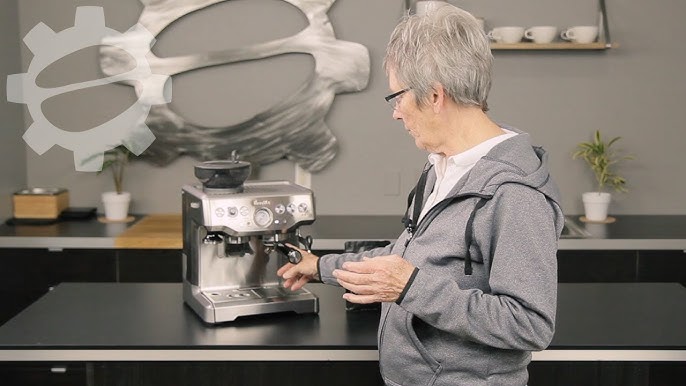
Credit: www.youtube.com
Cleaning And Maintenance
Proper cleaning and maintenance keep your Breville coffee machine working well. Regular care prevents buildup and ensures great coffee taste every time. Small daily habits help avoid big problems later. Follow these simple steps to keep your machine fresh and efficient.
Daily Cleaning Routines
Empty the drip tray and water tank daily. Rinse the portafilter and baskets with warm water. Wipe the steam wand right after each use to prevent milk residue. Clean the group head by running water through it briefly. These actions stop coffee oils and grounds from building up.
Descaling Procedures
Descaling removes mineral deposits inside your machine. Use a descaling solution made for coffee machines. Run the solution through the machine following the instructions in your manual. Rinse the machine well with clean water afterward. Descale every 1 to 3 months depending on water hardness and usage.
Maintaining Grinder Performance
Clean the grinder burrs regularly to avoid coffee dust buildup. Use a brush to remove leftover grounds from the grinder chamber. Check for any stones or hard particles that may damage burrs. Adjust grind size as needed for your coffee type. Proper grinder care helps maintain consistent grind quality and taste.
Advanced Brewing Tricks
Advanced brewing tricks can elevate your Breville coffee experience beyond the basics. These techniques help you explore new flavors and textures. They also let you tailor every cup to your taste. Experimenting with your machine’s settings can bring surprising results. Small changes in temperature or pressure create big differences. Trying different brewing methods expands your coffee skills. You can even mix recipes to find unique blends.
Customizing Temperature And Pressure
Your Breville machine allows you to adjust temperature and pressure. Higher temperature extracts more oils and flavors from beans. Lower temperature highlights delicate, fruity notes. Pressure controls the strength and crema of your espresso. Try small changes to find your perfect balance. Keep notes of settings for future use. This control turns each cup into a personal creation.
Using Alternative Brewing Methods
Besides espresso, your Breville can support other brewing styles. Use the steam wand for frothing milk in lattes and cappuccinos. Try using the hot water function for Americanos or tea. Experiment with cold brew by brewing espresso over ice. You can even use the machine to preheat cups and tools. These methods add variety and fun to your coffee routine.
Experimenting With Recipes
Mixing recipes changes your coffee experience every time. Combine different beans, milk types, and syrups. Adjust shot volumes and milk froth for texture changes. Add spices like cinnamon or nutmeg for unique flavors. Keep your experiments simple and note what you like. This way, you build a personal recipe book. Your coffee machine becomes a tool for creativity.
Troubleshooting Guide
Troubleshooting your Breville coffee machine helps keep your coffee tasting great. This guide covers common problems and easy fixes. Follow these tips to solve issues fast and enjoy your coffee more.
Fixing Extraction Problems
Extraction issues can make your coffee bitter or weak. Check the grind size first. Too fine grinds slow water flow and cause over-extraction. Too coarse grinds make coffee weak and sour. Adjust the grinder to find the right balance.
Ensure the portafilter is clean and tightly locked. A loose or dirty portafilter affects pressure and taste. Also, check the water temperature. Too hot or cold water changes flavor. Use fresh water for the best results.
Dealing With Grinder Issues
Grinder problems can stop your machine from working well. If your grinder jams, clean it regularly. Remove old coffee beans and oils from burrs. Avoid using oily or flavored beans that clog the grinder.
Adjust the grind size for your coffee type. Espresso needs fine grounds, drip coffee needs medium. Use the right amount of beans in the hopper. Overfilling causes uneven grinding and blockages.
Addressing Milk Frothing Challenges
Milk frothing can be tricky but fixing it is simple. Use cold, fresh milk for better foam. Warm milk does not froth well. Clean the steam wand after each use to prevent clogs.
Position the steam wand just below the milk surface. Keep the jug steady and tilt slightly. Move the jug slowly to create smooth, creamy froth. Stop steaming before the milk gets too hot.
Frequently Asked Questions
What Are Common Breville Espresso Mistakes?
Common Breville espresso mistakes include using stale beans, incorrect grind size, uneven tamping, and improper dosing. Avoid coarse or overly fine grinds. Ensure consistent pressure when tamping. Adjust grind settings gradually to match bean freshness and taste preferences for the best espresso extraction.
What Grind Size Should My Breville Be On?
Set your Breville grinder to a fine grind for espresso. Adjust slightly to improve taste and extraction time. Use fresh beans and test shots until balanced.
How To Pull The Perfect Espresso Shot In Breville?
Use fresh beans and grind them finely. Dose 18-20 grams, tamp evenly with firm pressure. Start extraction; aim for 25-30 seconds. Adjust grind size for taste balance.
How Do You Get More Crema In Breville Barista Pro?
Use fresh, high-quality beans and grind them fine but not too powdery. Tamp evenly with firm pressure. Adjust grind size gradually to optimize extraction time. Preheat the machine and cup for better crema. Distribute grounds evenly in the portafilter before brewing.
Conclusion
Breville coffee machines offer great control for espresso lovers. Use fresh beans for the best taste. Adjust grind size carefully to match your beans. Tamp grounds evenly to ensure smooth extraction. Clean your machine regularly to avoid bitterness. Experiment with settings to find your perfect cup.
These simple tips help you enjoy coffee daily. Your Breville can make cafe-quality drinks at home. Keep practicing, and your skills will improve fast. Happy brewing!
